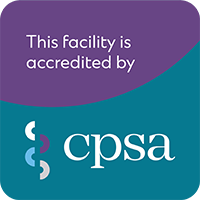Lumbar spine radiofrequency coagulation (RFC) is a technique that is not uncommonly used as a treatment to reduce pain arising from the lumbar spine facet joints – the articulations in the low back that allow a person to bend and move in different directions. Now, a physio blogging on RFC can be dangerous – not quite Michael Jackson Dangerous – as they don’t perform the procedures. However, after spending 5 years day and night following people pursuing RFC (actually in the neck region) during my PhD, I heard the good, the bad and the ugly, so here goes…
What Is Radiofrequency Coagulation (RFC)?
Radiofrequency Coagulation uses a thermal probe to heat up tissue until that tissue can no longer function. Thus, for the low back, after a person has had a positive response to diagnostic/test injections involving the medial branches of the dorsal rami (that’s right, a mouthful – those are the little nerves that transmit messages from the facet joints), then a further treatment – that being RFC can be applied to prolong the treatment outcomes. Essentially, this means that the nerve can’t transmit any messages from the facet joints, and hence people feel less pain. Now, this isn’t permanent. The nerves grow back – but that is a lengthy time period, and people report less pain and associated disability for longer than six months – that is, if the response to the diagnostic blockade was large to begin with.
Are There Any Risk Factors With RFC?
As with any interventional technique, risks are present. Most are the same as having a vaccine or acupuncture performed – i.e. the risk of a needle poke – possible infection or bleeding. There are other rare risks, such as neuritis – irritability of the nerve that was ablated, which can result in an uncomfortable hypersensitivity over the skin in the months that follow – however, it is uncommon.
What About Side Effects?
This is where people have speculated over the years on the effect of RFC on other tissues, especially the multifidus muscle. Multifidus obviously can’t function if there is no nerve supply to it. The multifidus muscle is known to both extend (backwards arch), and also ‘stabilize’ the low back, with dysfunction strongly associated with low back pain. Dysfunction and fatty infiltrate is known to occur even when back pain resolves. So, that sounds like a good thing to avoid! Different studies over the years have highlighted that multifidus re-training can assist in reduction of LBP1. So, RFC would seem to not be very helpful in that regard!
What Is the Real Effect of RFC on the Multifidus?
A recent study investigated this2. The researchers were clever. They looked at MRIs in people who had RFC on one side of their low back and measured the multifidus on that side and compared it to the other side where RFC had not been performed. They also compared it to measures of the surface back muscles which are not affected by RFC. What did they find? Well, more fatty infiltrate was evident – 4.2% of the muscle compared to 2.0% on the other side, and less cross-sectional area of the multifidus – 61mm vs 20mm on the other side. There was no change in the surface muscles. Thus, RFC appears to have negative effects on the multifidus.
What Are the Clinical Implications?
Well, we don’t know. This paper didn’t set out to answer that question. Is an extra 2% fat a problem for function??? The fact that there was a wide variety of responses also indicates that this is not universal. These findings are also in opposition to those by another group of researchers3. Other researchers have also showed that multifidus atrophy occurs as we age, even in those without low back pain4.
Final Thoughts…
Lumbar RFC is a validated treatment technique for those with facet-mediated low back pain who have not responded to or are unable to perform conservative rehabilitation, possibly due to pain. Thus, firstly, an effective program over 6-12 weeks of trunk rehabilitation should be pursued, as this has been shown to be effective in reducing pain and disability1. Consideration for non-coagulative therapies such as peripheral nerve stimulation may assist in multifidus restoration and also modulate pain5. Other orthobiologic medicines, such as Platelet-Rich Plasma (PRP) also demonstrate promise. Thus, maybe RFC is not the first option for treatment of low back pain, but it does have its place where other interventions are less than successful.
Ref:
1. Hides JA, Jull GA, Richardson CA. Long-term effects of specific stabilizing exercises for first-episode low back pain. Spine (Phila Pa 1976) 2001;26(11):E243-8.
2. Guven AE, Evangelisti G, Burkhard MD, et al. Asymmetrical atrophy of the paraspinal muscles in patients undergoing unilateral lumbar medial branch radiofrequency neurotomy. Pain 2024. DOI: 10.1097/j.pain.0000000000003223.
3. Oswald KAC, Ekengele V, Hoppe S, Streitberger K, Harnik M, Albers CE. Radiofrequency Neurotomy Does Not Cause Fatty Degeneration of the Lumbar Paraspinal Musculature in Patients with Chronic Lumbar Pain-A Retrospective 3D-Computer-Assisted MRI Analysis Using iSix Software. Pain Med 2023;24(1):25-31. DOI: 10.1093/pm/pnac103.
4. Crawford RJ, Filli L, Elliott JM, et al. Age- and Level-Dependence of Fatty Infiltration in Lumbar Paravertebral Muscles of Healthy Volunteers. AJNR Am J Neuroradiol 2016;37(4):742-8. DOI: 10.3174/ajnr.A4596.
5. Gilligan C, Volschenk W, Russo M, et al. Three-Year Durability of Restorative Neurostimulation Effectiveness in Patients With Chronic Low Back Pain and Multifidus Muscle Dysfunction. Neuromodulation 2023;26(1):98-108. DOI: 10.1016/j.neurom.2022.08.457.





